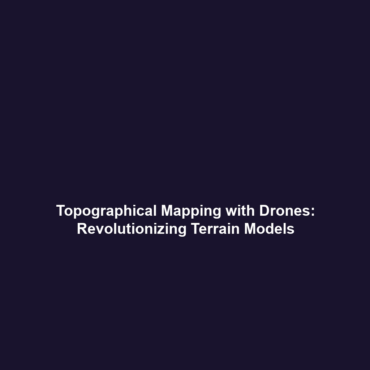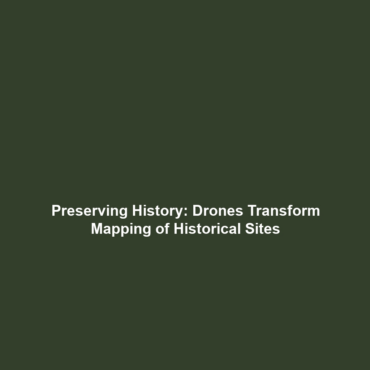Topographical Mapping: Drones Providing Detailed Terrain Models
Introduction
Topographical mapping has evolved significantly with the advent of drone technology, enhancing precision in creating detailed terrain models. Drones used in scientific research offer unmatched efficiency and accuracy in surveying and mapping, making them invaluable to various fields. This article explores the significance of topographical mapping through drones, emphasizing their transformative impact on Drones in Science and broadening our understanding of landscapes.
Key Concepts
Understanding Topographical Mapping
Topographical mapping entails capturing the Earth’s surface features, including elevation changes, natural and man-made structures. Drones fitted with various sensors and imaging technologies have become instrumental in this process, allowing for:
- Precision Mapping: Drones can survey large areas quickly, providing highly accurate data for topographical models.
- 3D Modeling: High-resolution images combined can create three-dimensional representations of terrain.
- Accessibility: Drones can reach challenging terrains where traditional surveying methods are difficult.
Integration into Drones in Science
The integration of drone technology into scientific mapping practices highlights its significance. As a part of Drones in Science, topographical mapping enhances data collection for environmental studies, urban planning, and disaster management.
Applications and Real-World Uses
The practical applications of topographical mapping via drones are varied and impactful:
- Construction: Drones provide construction companies with accurate terrain models for project planning.
- Agriculture: Farmers utilize topographical data for precision farming, optimizing crop production.
- Environmental Monitoring: Scientists use drones for conservation efforts, tracking changes in landscapes and ecosystems.
In essence, the applications of topographical mapping through drones demonstrate how they are reshaping our understanding of scientific fields.
Current Challenges
Despite the numerous advantages, several challenges impede the widespread use of drones in topographical mapping:
- Regulatory Issues: Navigating airspace regulations and privacy concerns can be complex.
- Technical Limitations: Weather conditions can affect drone operation and data quality.
- Data Management: The challenge of processing and analyzing large volumes of data collected by drones.
Future Research and Innovations
Looking ahead, innovations in drone technology promise significant advancements in topographical mapping:
- Improved Sensor Technology: Next-generation sensors may improve data accuracy and resolution.
- AI Integration: Artificial intelligence could enhance data processing, enabling real-time analysis.
- Increased Autonomy: More autonomous drones will reduce the need for human intervention in mapping tasks.
These breakthroughs herald a new era of precision and efficiency in the study of landscapes through drones in science.
Conclusion
Topographical mapping through drones is a crucial advancement in the field of Drones in Science, offering detailed terrain models that aid in various applications from agriculture to urban development. As drone technology continues to evolve, it opens up new avenues for research and real-world applications. To learn more about related topics, visit our articles on drone technology advancements and applications of drones in environmental science.

